- What Is Digital Brand Management?
- Why Is Digital Brand Management Important for Modern Businesses?
- How Digital Brand Management Has Evolved
- Digital Brand Management Has Evolved for Creative Teams
- Core Components of Digital Brand Management
- Digital Brand Management Best Practices
- Who benefits from digital brand management?
- Invest in Better Brand Management
Get branding tips and expert advice delivered straight to your inbox.
The article below was written in 2021, but much of its information is just as true today as when it was originally written. However, we have updated some of the content to ensure that it is as fresh and relevant in 2023 as it was when it was originally published.
There are over 256 million digital buyers in the United States alone. With such a large online market, a solid digital brand management strategy seems like an obvious goal. Surprisingly though, many companies aren’t preoccupied with how their brands appear online — and therein lies the problem.
Your digital brand dictates how your customers experience your business when they're online. Digital brand management enables you to take charge of that experience and shape it to your benefit.
In this post, we’ll explore the importance of digital brand management in the modern marketing age. We’ll also discuss key aspects and best practices to help you establish a memorable online presence that attracts customers and drives growth.
What Is Digital Brand Management?
Digital brand management is the holistic overview of all policies, plans, and tactics that influence how people interact with your brand online through channels like social media, search, website, apps, paid ads, and any other digital platform.
Effective digital brand management requires careful planning and execution. It’s a wise decision to appoint a digital brand strategist, as these specialists can map out the direction and strategies your business will pursue to achieve its marketing goals via online channels.
A brand strategist will take the lead on several initiatives, including:
- Devising a customer-centric digital brand strategy
- Ensuring consistent and compelling brand messaging across all channels
- Performing market analysis to predict future trends
- Suggesting how to position your brand to generate more sales and revenue
- Developing your brand’s digital marketing strategy for long-term growth
Why Is Digital Brand Management Important for Modern Businesses?
Poor brand management can lead to major problems in your business. If you're lucky, it will only cause inconsistent messaging and low traction on social media. But at its worst, a poorly handled brand will struggle to attract and retain customers and may eventually go out of business as expensive campaigns continue to fail.
There are many things to consider in brand management, as you must stay on top of everything, from your business's reputation to impressing stakeholders and ensuring your messaging remains consistent across all channels.
In an age where social proof carries a lot of weight and news travels fast online, digital brand management helps companies hold sway over a few key areas:
- Your customers’ expectations: When you’re in charge of your brand, you can provide a personalized customer experience whether the person is on your landing page or your Facebook page.
- Your customers’ perception of your brand: A well-oiled brand management plan and responsive team can keep tabs on your digital presence and control the narrative.
- Industry regulations: If you're in a highly regulated sector such as finance or healthcare, brand management can help you position your business as compliant with industry standards, to build trust with your audience.

How Digital Brand Management Has Evolved
The landscape of digital brand management has changed rapidly in just a few short years, and this is partly due to how COVID impacted the world and business as we know it. As countries emerged from lockdowns and employees are trickling back into the office, many businesses continue to offer hybrid work schedules or operate fully remotely.
In this new era, where the lines between work and home blur, teams working across continents and file sharing going completely online, digital brand management has become more critical than ever. Let's explore how this seismic shift has impacted the world of managing your brand and what it means for your business.
Digital brand management tools have helped companies adapt to remote or hybrid work policies. As many of these tools and services suddenly had to scale and adapt quickly, standards have evolved and the benefits of structured brand management have become evident—no more relying on email chains or on-location LAN networks for file storage and retrieval.
What has become even more common since 2020 is the improvement of collaboration and communication tools to aid in helping employees communicate when they are not all in the same location. Many brand management tools will feature extensive integrations with other software and provide APIs for custom development.
This ease of integration allows brands to connect their brand management software to the other tools in their business workflow so that they work seamlessly together.
Employees can leave comments on work that others can pick up and in some cases, tools even offer live collaboration, which allows multiple team members to operate on the same file or asset simultaneously. This ease of collaboration can be especially helpful for creative teams.
Let’s take a closer look at how digital brand management impacts creative teams.
Digital Brand Management Has Evolved for Creative Teams
Digital brand management is a relatively new concept, but digitized records are not — the Declaration of Independence was digitized in 1971 (the first of 60,000+ Project Gutenberg documents).
Universities and libraries were digitizing records well before the modern internet — the TCP/IP platform that lets computers and systems communicate with each other remotely — launched in 1983.
Today, it’s hard to imagine a time before Amazon, eBay, or same-day delivery. Digital commerce has evolved rapidly since it debuted in the mid-’90s. Modern consumers are using multiple channels and devices in their buying journeys, which has made digital brand management increasingly important. Brands must ensure a consistent style and tone across all creative assets.
More channels
We live in the omnichannel age, where the average customer expects to engage with brands across a range of mediums before making a purchase. Brands must produce creative assets for multiple channels, including the company website, email newsletter, social media, ads, and video.
More asset types
Teams can’t simply roll the same content out on every channel. Some do, but that lack of creativity is unlikely to inspire or influence people. The best omnichannel experience is a seamless continuation that builds upon the other channels to drive the customer journey forward. With more channels, creative teams must produce different types of content, including blog posts, infographics, videos, and podcasts.
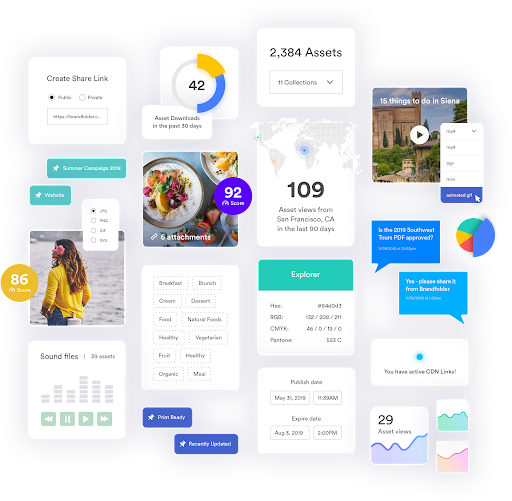
Creatives may be working with multiple asset types daily. Source: Brandfolder
More stakeholders
Cross-functional teams are the norm, and brands now have input from many different departments, such as creative, marketing, sales, compliance, etc. While breaking down organizational silos is a good move, this collaborative approach invites more stakeholder input. Therefore, you need a well-defined system to collect and analyze feedback quickly so that projects don't stall or get delayed by bureaucratic red tape.
More compliance risk
Speaking of red tape, compliance risks - such as marketing, brand, and legal risks - are a top priority in brand management, especially with so many channels and assets. Management and legal teams must approve every asset and ensure that its use, viewing and distribution align with all industry regulations.
More accountability
The rise of mobile technology and data analytics has paved the way for greater accountability in marketing. Companies can measure key metrics at a granular level to gauge performance on any campaign. With this power comes more responsibility. Creative teams and marketers can’t throw money at wild ideas — everything must prove its worth and deliver tangible ROI for the brand.
Core Components of Digital Brand Management
Digital brand management is a combination of various elements that go far beyond a simple logo or tagline. As you develop a clear understanding of these elements and how they work together, you can improve the brand experience for customers.
Here's an overview of the essential aspects of digital brand management:
Brand identity
Brand identity is the face of your brand. Think logos, colors, and typography. Together, these visual components fuel brand recognition and reinforce and complement the reputation of your brand.
Your brand identity may not always convey key messaging through graphics, but a strong identity will engender trust with new prospects and also help you retain existing customers.
Key design elements needed to create a robust, attractive and consistent brand identity include:
- A clear brand purpose
- Captivating brand personality through the use of language, humor, and content
- A catchy slogan that aligns with the brand personality
- A memorable logo
- On-brand supporting graphics
- Unique typography
- An eye-catching color palette
With the right personnel and brand management software, your company can develop a strong brand identity led by a style guide and ongoing employee training.
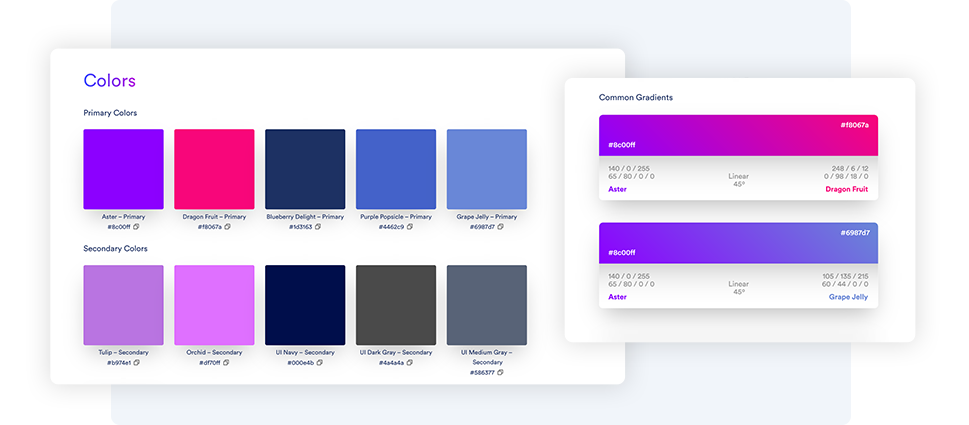
An example of a branded color palette, from Brandfolder
Brand positioning
Brand positioning is the process of designing your company image in a unique way that stands out from the competition to attract more attention in your market.
With successful brand positioning, your company can enjoy benefits such as higher perceived value and greater customer loyalty.
The brand positioning strategy you implement will vary depending on your product, service, and industry. Some common strategies include:
- Customer service positioning
- Price-based positioning
- Quality-based positioning
In any case, you should think of brand positioning as the extent to which your brand appears credible, favorable, and different in the minds of your customers. Up to 86% of customers say authenticity is a crucial determinant when deciding which brand to like or support.
Brand communication
Brand communication is an integral part of digital brand management. Through effective brand communication, your business can inform, teach, and persuade stakeholders about the brand's values and enlighten and remind them about its fundamentals and principles.
Put simply: Brand communication is the tool a company uses to deliver meaningful messages to customers, partners, and investors.
Brand communication leverages several mediums, including social media, blogs, and email, to showcase the value and keep stakeholders updated on the latest developments. When done right, this crucial aspect of digital brand management will offer immense value in helping your company achieve its goals and objectives.
Brand consistency
Brand consistency is the continuous delivery of brand messaging that aligns with the existing brand identity, core values, and strategy over time. This consistency helps you offer a seamless, coherent brand message and image across all marketing channels.
A healthy 70% of marketers assert that consistent branding is the most important thing to remember when communicating with your customers. Maintaining a consistent brand makes it easier for customers to remember you or associate certain products or experiences with your brand.
Every time they see your logo, it is a subtle reminder of what to expect from your business. Brand consistency is key to creating a relatable identity that triggers this feeling of trust and recognition at every touchpoint.
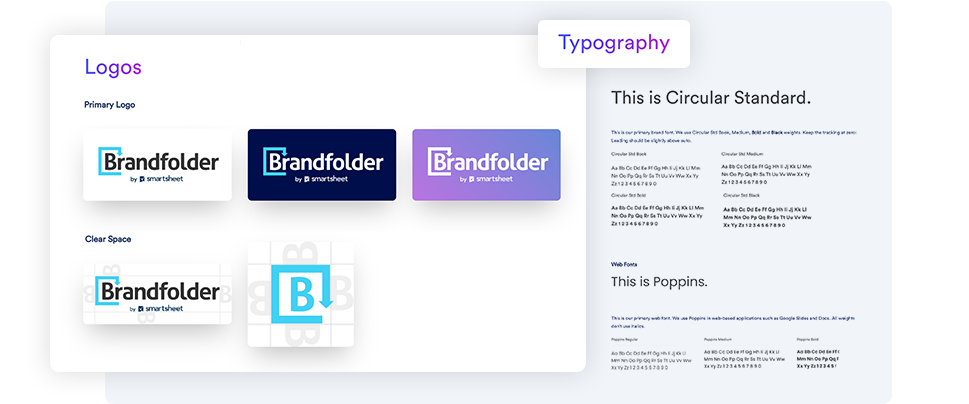
Limiting font types and logo variations helps create consistency across all platforms. Source: Brandfolder
Brand extension
Brand extension is a strategy that involves leveraging existing brand awareness to launch a new product or category or enter a new industry.
A business thrives on the brand loyalty of its customers, generating more customer lifetime value (CLTV) as they embrace the new offerings. When done correctly, brand extensions enable a company to expand its customer base, sell to new demographics, and increase profits.
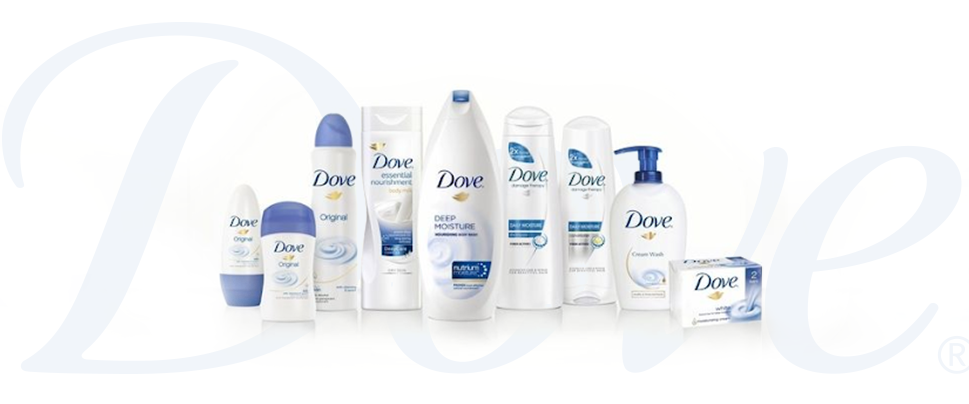
Source: Branding Strategy Insider
This strategy works best when the new product or service shares common qualities with the original products, as target customers can still relate to the evolving brand identity.
Digital Brand Management Best Practices
Digital marketing is more critical now than ever, as global e-commerce sales surged north of $4 trillion in 2020.
Ignoring the trends and technologies is a mistake — you must adopt effective digital brand management strategies to stay ahead of the curve or, at the very least, remain competitive.
Let’s look at the fundamental aspects of a successful digital marketing campaign to help you improve and grow your digital brand.
Define brand values
An excellent digital management strategy starts with establishing your brand value from the get-go. How you choose to represent your business, and the principles you abide by, will determine your relationships with customers and prospects.
By defining your brand's core values, you're stating what's most important to you and influencing how customers think and feel about your business.
With clear-cut brand values, you can:
- Make better decisions
- Gain greater credibility
- Nurture stronger relationships with your customers
- Shorten sales cycles since clients and prospects can easily relate to your values
Successful brands carefully choose their values and infuse them into every aspect of their businesses, throughout messaging, marketing, and their products and services. For example, Apple’s core values are deeply entrenched in creativity and innovation, and that extends to the packaging they use for their products.
Develop brand guidelines
A brand guide is a rulebook that outlines how your business presents itself to customers and prospects through its logo, color selections, photography, fonts, and more.
It is the reference tool that ensures your brand maintains a consistent look and feel, even when you have different people working on sales, design, marketing, and customer service.
Here are a few things to keep in mind when creating your brand guidelines:
- Collect brand guide inspiration: With solid examples, you can get good ideas and direction to define your brand.
- Define brand guide elements: This step includes your brand story, logo guidelines, brand color palette, typography and font guidelines, brand voice, and images.
- List all brand collateral: Consider all other channels that your company uses for communication and promotion. Discuss the guidelines for each channel, as the voice or content may differ from your website to your social media channels.
- Update regularly: Create new guidelines and revisit the older directives periodically to ensure that you’re sticking to the rules.
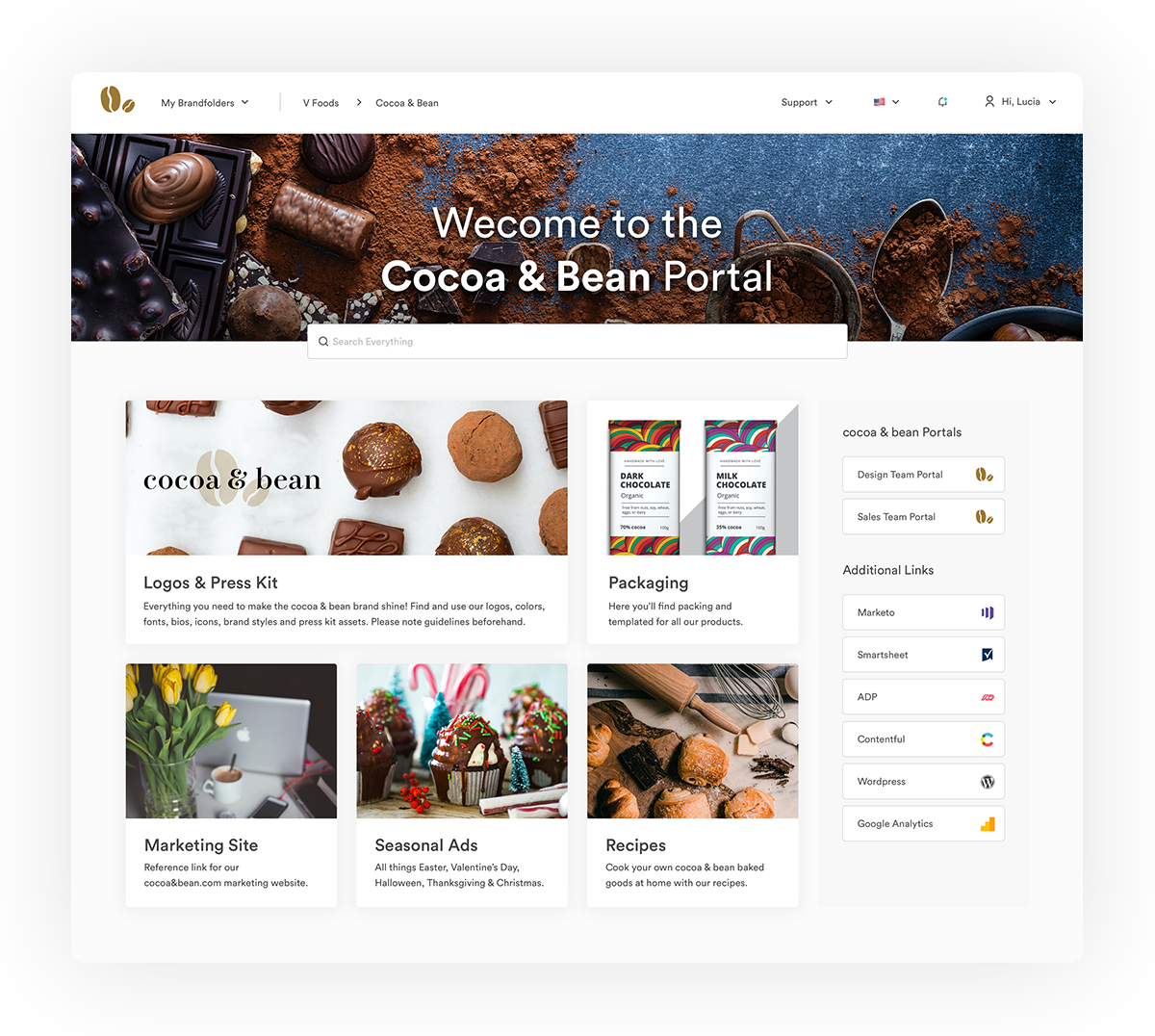
Brandfolder’s Brand Portal helps companies organize branded collateral
Store and organize brand assets
As your company grows and you explore more channels, it gets harder to keep all branding aligned. You can simplify this challenge by storing and organizing your brand assets to ensure they’re easily accessible by anyone in the organization.
The most effective approach to this issue is to invest in digital asset management software that makes it easy for any department to upload, store, organize, and access the most up-to-date brand-compliant assets.
With this centralized platform, you make it easy for every employee to contribute to the growing brand, as they can easily access the assets, information, and guidelines they need to create content that reflects your brand’s ethos and aesthetics.
With Brandfolder as your digital asset management software, any department can share, track, store, upload, and manipulate your brand’s assets, enabling you to maintain consistency across all marketing channels.
And because Brandfolder stores your brand assets in the cloud, you can be sure your guidelines are always up-to-date and quickly accessible on demand.
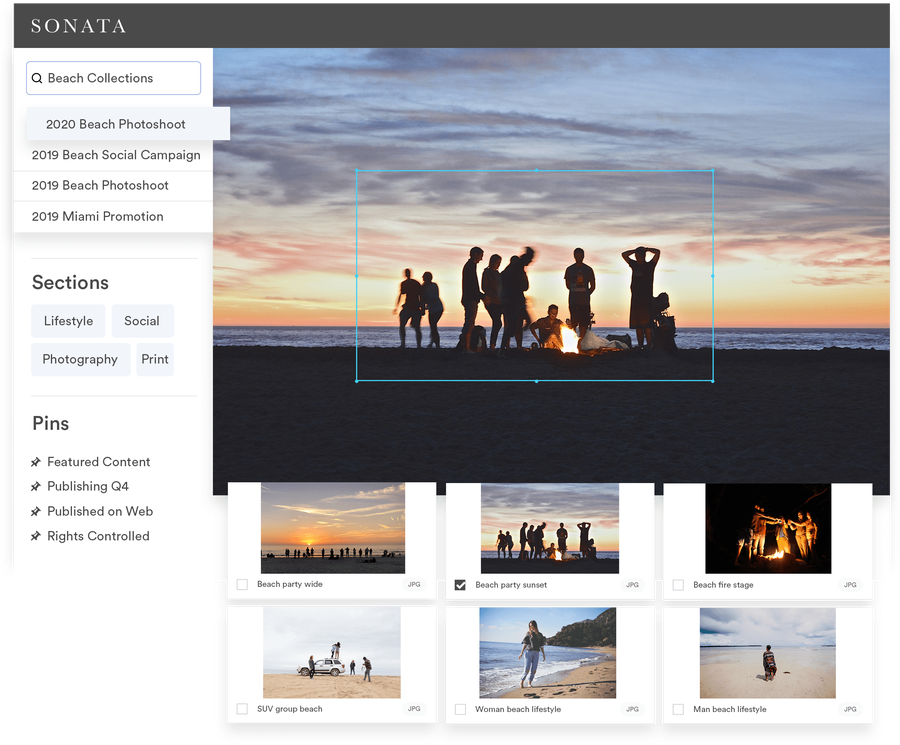
Organize photos and other creative assets with Brandfolder
Choose your digital channels
With your brand guidelines running on digital management assets software, the next step is to select the digital channels you will use to grow your brand.
Decide where you want to publish your content and how often. Ideally, you want to broadcast the content channels that allow you to reach as many customers as possible, whether it’s your website, social media, or PPC.
Remember, each digital channel you choose will have its own specific requirements for content. For example, if you focus on Instagram and Pinterest, you will need many visual assets with particular dimensions and filters. On the other hand, an emphasis on YouTube or podcasting will require video and audio production specialists.
Get clarity about your channels and the content you intend to create, as this will help you determine the resources required to manage your brand's communications.
Be consistent
Consistency is everything. When creating content for your business, ensure it repeatedly emphasizes your brand’s message, values, and image.
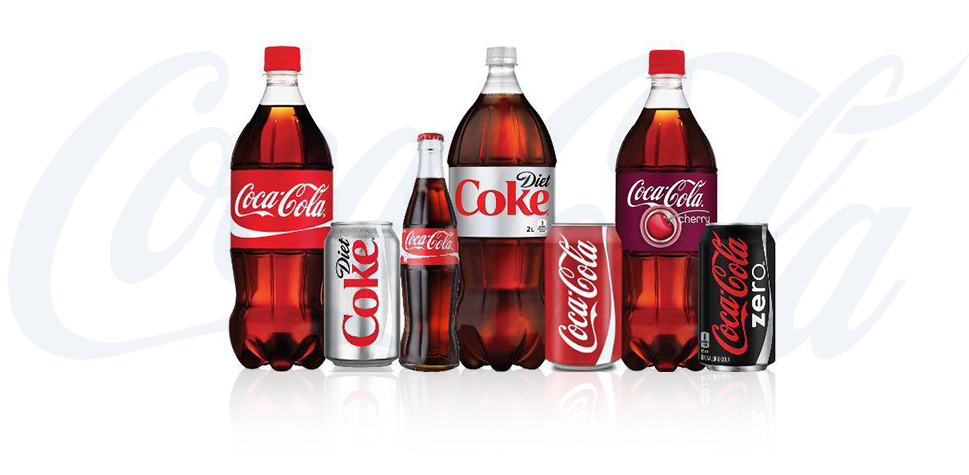
Source: Branding Strategy Insider
Coca-Cola is a perfect example of a brand that has perfected the art of being consistent. The soft drinks brand is instantly recognizable with its wordmark logo in script text.
A brand that maintains consistency across all marketing channels develops credibility among customers, prospects, and competitors. Over time, that credibility translates to sales and profits. According to Lucidpress, consistent presentation of a brand can increase revenue by 33%.
Outline a review and approval process
Effective digital brand management calls for a smooth approval process of your brand’s messaging before it is shared with customers, prospects, and other stakeholders.
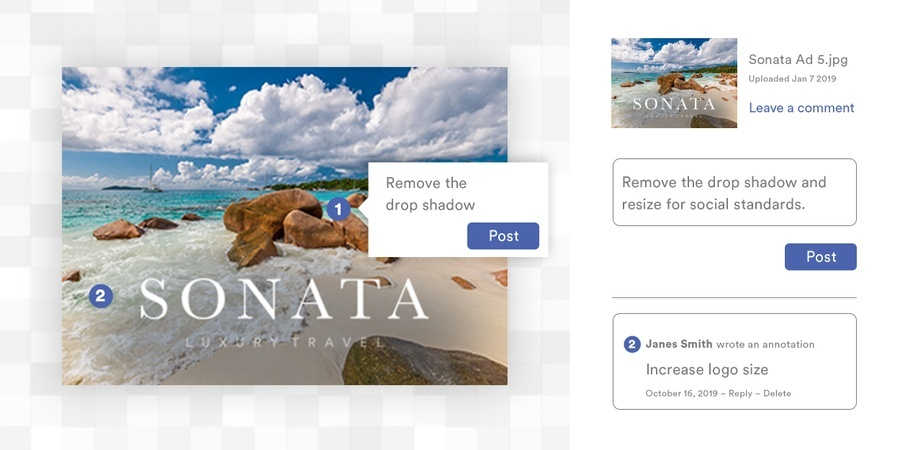
Collaborating on creative assets inside Brandfolder
You'll want to have a digital brand manager to ensure that anything added to the brand portal for distribution aligns with your business's core values. It's best to have a straightforward workflow to make revisions easy while allowing people to provide feedback.
Outlining a review and approval process enables your team to deliver new assets promptly and, most importantly, ensure that everything remains consistent.
Tools such as Brandfolder can help streamline collaboration with digital brand management, and improve communication so that all new assets can be shipped on time and remain on-brand.
Use brand templates
Brand templates ensure that your team, including non-creatives, can create collateral and marketing materials when needed. The use of templates improves efficiency by enabling fast turnaround when teams need to make quick changes or scale their content output.
Using pre designed brand templates will save you time by eliminating repetitive processes and enhancing your team’s productivity.
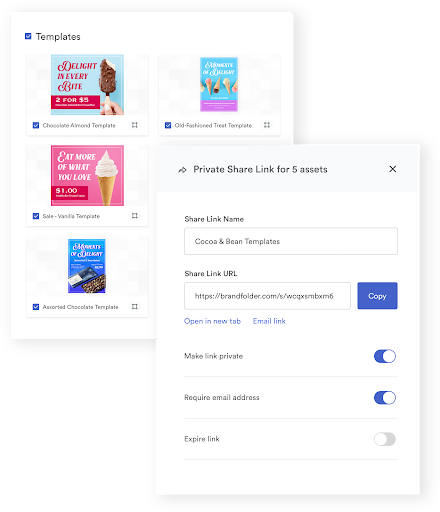
Leverage templates to ensure brand consistency across teams
Brandfolder offers responsive templates that help your team customize content quickly. That way, your business can continue to build consistent brand assets on demand and eliminate possible errors.
Moreover, customizable templates ensure that you can create excellent content aligned with your guidelines without starting from scratch every time.
Measure brand impact
Measuring your brand's impact is an integral part of your overall digital brand management plan. It helps you identify any disparity between your brand's internal perception and external reality. Plus, measuring your brand’s impact lets you know if resources spent creating and promoting your brand's assets bring in the expected results across your channels. It also helps track usage for compliance.
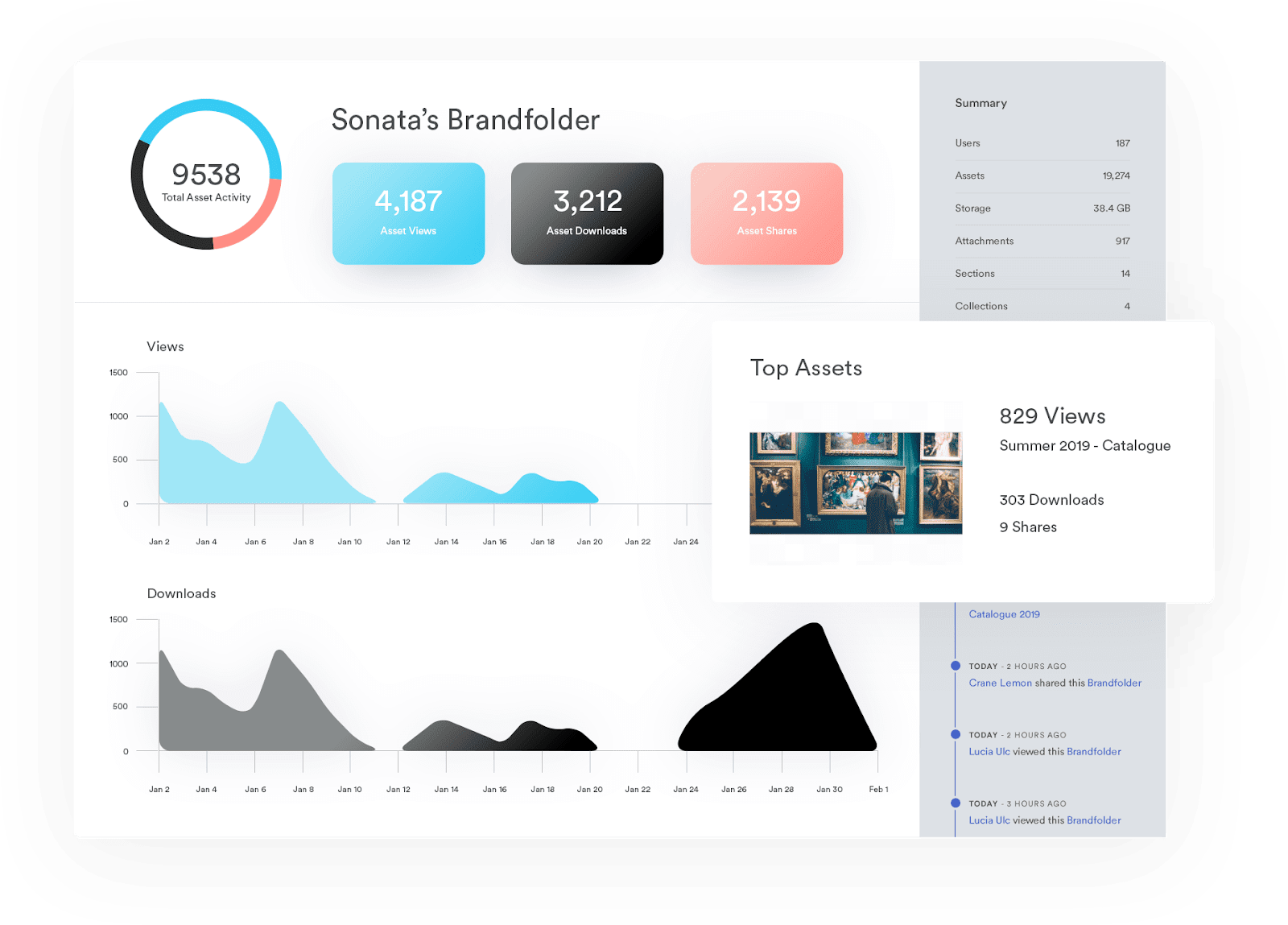
Track which brand assets get viewed, shared and downloaded in Brandfolder
Brand impact encompasses various concepts, including engagement, awareness, perception, and competitive assessments. By keeping tabs on your key metrics, you can measure your branding efforts' success and get the insights you need to make improvements.
Who benefits from digital brand management?
Various departments in your organization can benefit from digital brand management. Managing and maintaining a brand, including keeping branding consistent across print, web, and social media requires coordination.
Graphic designers can use digital brand management to share assets across teams to ensure consistency, and marketers can easily access the most up-to-date content. This means less downtime chasing designers for the latest assets and confusion around having the latest correct versions.
Digital brand management software can make your social media managers’ lives easier as they can quickly and easily ensure they’re using the final version and correct format of each asset for each social media platform they’re posting to. Also, social media managers no longer have to waste time searching for the latest versions of assets or coordinating with other departments to get the assets they need. Instead, they can access the most up-to-date content and all other assets from the same platform used by other teams, ensuring that their social media presence remains consistent with the company’s overall branding strategy.
Project and business managers also benefit from the level of transparency and control that is difficult to achieve without the ‘single source of truth’ that digital brand management software provides. They can easily assign tasks, track progress and manage deadlines, ensuring that projects are completed on time and within budget.
Digital brand management software is a cloud-based solution accessible from anywhere worldwide. This makes it more convenient for distributed teams and those who often work with third parties or contractors. For example, once you add a team member or contractor to a particular project, they will immediately have access to all the resources they need to do the job (with granular access controls to prevent them from accessing projects and assets they do not intend to).
Invest in Better Brand Management
Digital brand management is no longer a choice for any business that wants to stand out among competitors.
If you want to build and maintain a recognizable brand identity that connects with people and delivers sustainable growth, it is essential to invest in better brand management. In doing so, you'll improve the brand experience, increase perceived value, and build a successful business that attracts and retains loyal customers.
Brandfolder helps you establish a strong brand by providing a centralized platform where anyone on your team can access your brand assets on demand. This technology makes it easier for everyone to collaborate and to continue building your brand with an omnichannel approach that reaches and influences more people.
Get in touch with an expert to see how DAM software makes it easy to manage, curate, and distribute all of your brand assets.
